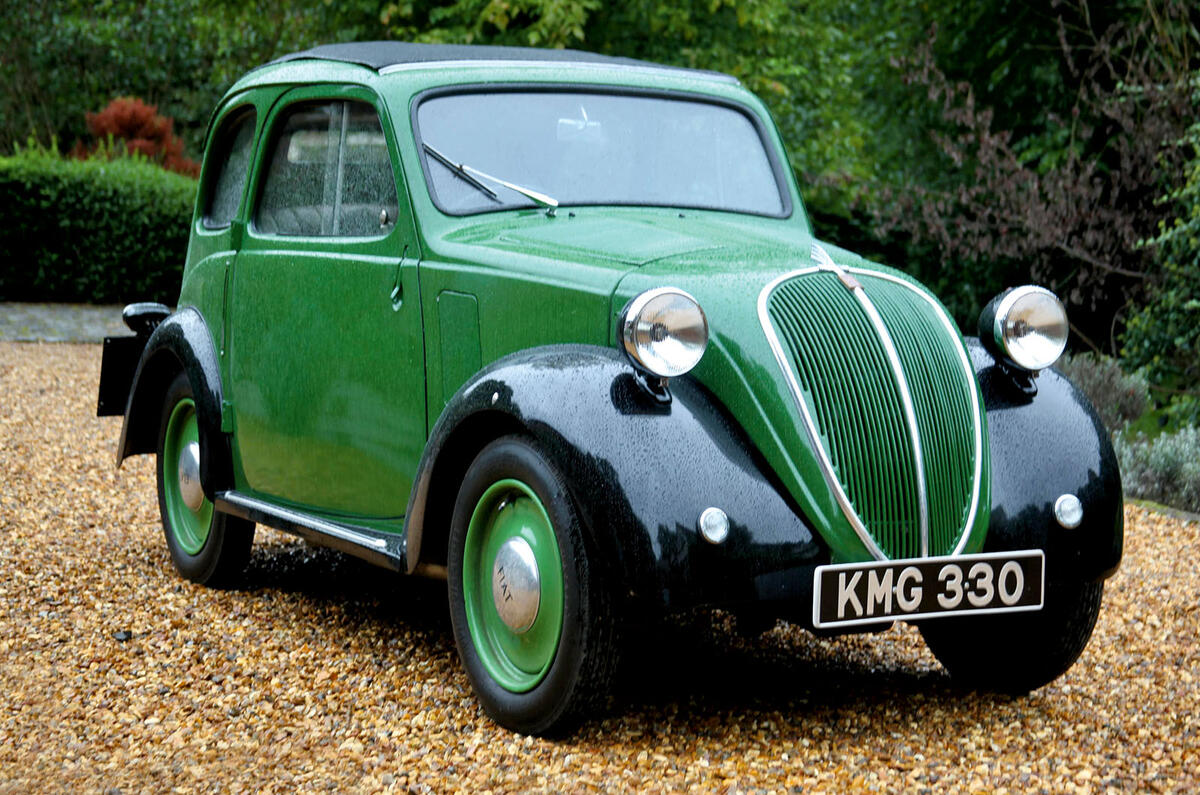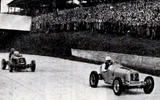We fell in love with the Fiat 500 right away, but when a four-seat version of the 'clockwork mouse' was introduced three years later, we had doubts: after all, it was just 3.3 metres long and used the smallest engine - a 13bhp 570cc four - of any car on the market.
Apparently, the only change needed to take two more people was a squarer rear, a higher final drive ratio and half-elliptic rather than quarter-elliptic rear springs.
We needn't have worried. After a day three-up, we said: "This additional weight is naturally felt, but the car remains a practical proposition and is able to hold the speeds favoured by most family motorists." Indeed, up to 50mph. Overall, "it maintains driving interest in a remarkable degree".
"Admiration cannot be denied to the engine's efficiency. It revs so freely and does so much for its size." ("Delightfully smooth", too.)
"The riding is exceptionally comfortable. The independent front suspension allows decidedly bad surfaces to be taken without any 'going solid' or ill-treatment." Although the rear often bounced.
"The steering is not only finger-light but also really accurate and free of road-wheel shocks."
There was enough leg room in the rear, thanks to new foot wells, and the canvas roof could open up to fend off claustrophobia. Little wonder the 500 lived until 1955, half a million being made, and has been successfully reborn no fewer than four times since.
America shows us the motoring world of tomorrow
Exhibitions of national achievements are an ancient idea, but the 1939 New York World’s Fair is notable as the first to have focused on “the world of tomorrow”.
Our man was mightily impressed with the amount that had been spent on the fair, literally doffing his hat to General Motors’ Highways and Horizons building, which was the size of two city blocks and fronted by a gigantic diesel locomotive.
Inside was a vision of America in 1960 – which he viewed from a row of moving chairs while listening to a narration (pictured). It showed how US cities would be transformed by highways (not to mention skyscrapers), with wonders such as elevated and depressed turn-offs; ramped loops allowing cars to turn at 50mph; flyover junctions; elevated walkways; and even continuous illumination at night.

When he alighted, he found himself in a life-size replica of one of these streets of the future, then a 600-seat auditorium where a science show ran continuously. Ford, meanwhile, produced the world’s only animated wall mural (a huge diagram of a V8 in which the pistons rose and fell); a vast merry-go-round of 113,600 moving parts, wherein wooden figures showed how cars were made; and ‘the road of tomorrow’, circulated by 36 V8 saloons.
And Chrysler had a “truly remarkable three-dimensional film”, viewed through special polarised glasses, in which cars “seem to rush out of the screen on to the heads of the startled audience”.
The last-ever race at Brooklands

The world’s first purpose-built race track was opened in Surrey in 1906 and hosted grands prix from 1926. The 1939 Campbell Trophy was a non-championship event and didn’t attract foreign entrants, but even so, many thousands enjoyed watching 12 Brits.
Perhaps surprisingly, the winner wasn’t Prince Bira – recipient of the British Racing Drivers’ Club’s gold star – in his Maserati but the veteran Raymond Mays, “driving [his ERA] faultlessly, steadily forging ahead” while “some terrific scraps” played out behind. This was the last-ever race at Brooklands – an aircraft factory was built on it during the war.
Is racing in the wet too dangerous?

After the death of Mercedes-Benz’s Richard Seaman in the wet at Spa, the president of the British Racing Mechanics’ Club wrote to Autocar proposing that grand prix rules be changed so that rain would stop any race. “The problem is not so much the slipperiness of the course but the difficulty of passing when the car in front is just a haze of spray and neither vizor nor goggles will stop the blinding at the crucial moment,” added our motorsport man. Nearly a century later, this issue remains unresolved and debate still rages.
The Autocar Archive, documenting automotive history from 1895 to the present day, is available to readers via digital subscription. If you are an institution, subscribe here.











Add your comment